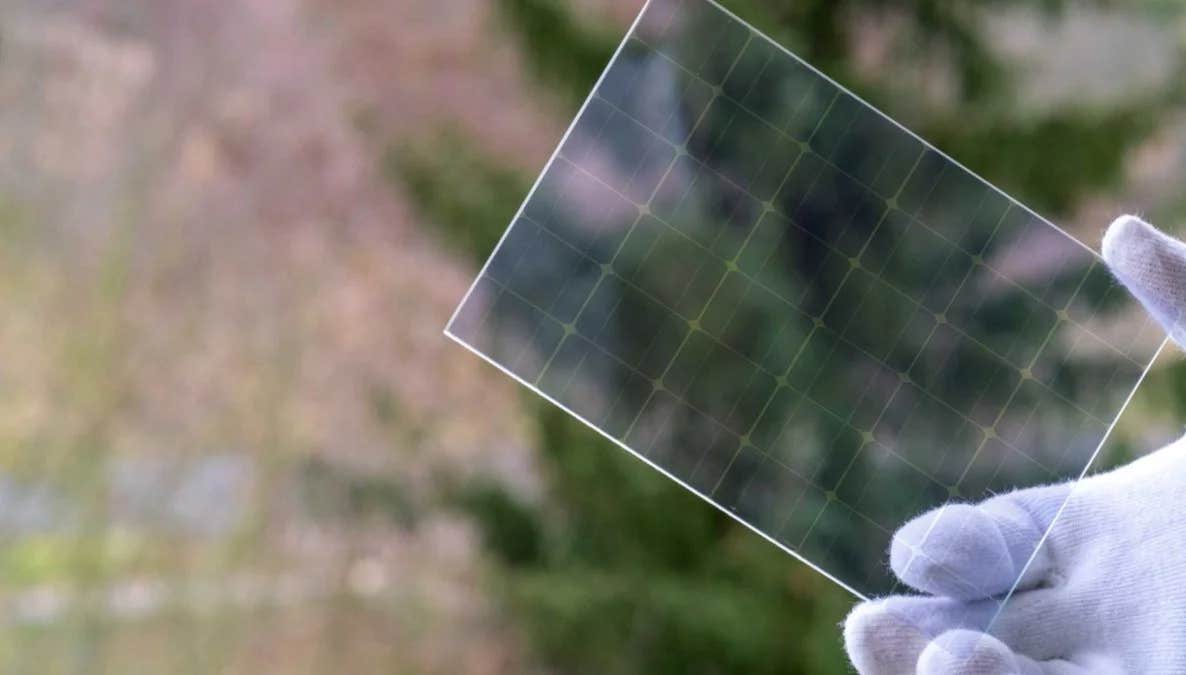Solar breakthrough: Transparent panels generate power 1000x more efficiently
Traditional panels are bulky, stiff, and completely opaque. That makes them hard to fit into most urban designs or consumer products.

Researchers coated various thin metals onto the ITO and inserted a thin layer of Tungsten Oxide between the coated ITO and the tungsten disulfide. (CREDIT: luchschenF)
Solar power has long been seen as a clean alternative to fossil fuels. But its everyday use still faces hurdles. Traditional panels are bulky, stiff, and completely opaque. That makes them hard to fit into most urban designs or consumer products.
These limits have kept solar tech stuck on rooftops and in fields. But a new type of cell, almost invisible to the eye, may soon change that. Transparent solar cells could turn windows, cars, and even skin into energy-harvesting surfaces.
Unlike the old models, these next-gen cells don’t clash with their surroundings. They blend in while still capturing sunlight. Some are so clear they reach up to 79% transparency. On average, most hover above 70%, allowing them to function without being noticed.
A major reason for this leap forward lies in materials only a few atoms thick. Known as 2D materials, they’re helping reshape what solar panels can do. One group, called transition metal dichalcogenides, absorbs light well and has band gaps that can be tuned.
These qualities let scientists design panels that are both see-through and effective. The old trade-off between power and appearance is no longer necessary. Efficiency no longer comes at the cost of visibility.
Innovations in Engineering and Advanced Materials
To build these near-invisible cells, researchers paired tungsten disulfide with a common transparent conductor. This conductor, indium tin oxide, is already used in things like phone screens and touch panels.
By studying how these two materials work together, teams have found ways to improve solar absorption without blocking light. The duo forms a thin, flexible layer that can turn ambient light into electricity.
Related Stories
The team, led by Toshiaki Kato at Tohoku University, optimized the contact barriers between these materials by coating ITO with thin layers of copper and tungsten oxide. This architectural adjustment reduced the Schottky barrier height, enhancing carrier collection and energy conversion efficiency.
“Our approach improved the power conversion efficiency over 1,000 times compared to devices using standard ITO electrodes,” explained Kato. The resulting device achieved an AVT of 79% and a power density of 13 milliwatts per square centimeter, comparable to the performance of opaque solar cells.
Scaling the technology presented additional challenges. As device size increased, an unexpected drop in open-circuit voltage was observed. Researchers addressed this by refining the aspect ratio of the unit devices, ensuring consistent performance across larger areas.
These advancements culminated in the development of a 1 cm² solar cell that generated 420 picowatts with minimal impact on transparency.
Applications: A Solar Renaissance
The potential applications for NISCs are vast. In architecture, they could transform windows into energy-generating panels without altering aesthetics or reducing natural light.
This innovation could enable skyscrapers, with their expansive glass surfaces, to become power plants. For electric vehicles, transparent solar cells could be integrated into windshields or body panels, enhancing range and reducing reliance on charging infrastructure.
Wearable technology also stands to benefit. These cells could power smartwatches, fitness trackers, or medical devices embedded in clothing or accessories. Future iterations might even integrate into human skin to power biomedical implants like pacemakers or glucose monitors.
Smart devices represent another promising avenue. Transparent solar cells could replace traditional glass components in smartphones and tablets, enabling self-charging gadgets that eliminate the need for external power sources.
Environmental Impact
The shift toward transparent solar cells holds profound environmental implications. By embedding solar technology into everyday objects, the reliance on fossil fuels can diminish significantly.
Unlike traditional energy sources, solar power produces no greenhouse gas emissions, aligning with global efforts to combat climate change. Additionally, these cells contribute to a circular economy by expanding the utility of previously underutilized surfaces.
Despite their promise, transparent solar cells face hurdles before widespread adoption. Durability remains a concern, particularly as devices must withstand prolonged exposure to environmental conditions. Manufacturing scalability is another challenge, as precise material deposition techniques are required for consistent performance.
Material costs also play a role. TMDs and other advanced materials used in NISCs are relatively expensive compared to silicon, the primary material in traditional solar panels. Researchers are actively exploring cost-effective alternatives and manufacturing innovations to make this technology accessible to a broader market.
A Vision for the Future
The journey toward fully transparent solar cells illustrates the power of interdisciplinary collaboration. Advances in nanotechnology, materials science, and engineering have converged to produce devices that defy conventional limitations. As these technologies mature, they are poised to redefine how solar energy is perceived and utilized.
“The potential of transparent solar cells extends far beyond current applications,” said Kato. “From powering urban infrastructure to integrating with consumer electronics, these cells symbolize a sustainable future that harmonizes technology with the environment.”
The findings of this research, published in Scientific Reports, signal a paradigm shift in renewable energy technology. With continued innovation, near-invisible solar cells could become the cornerstone of a greener, more connected world.
Note: Materials provided above by The Brighter Side of News. Content may be edited for style and length.
Like these kind of feel good stories? Get The Brighter Side of News' newsletter.
Joseph Shavit
Head Science News Writer | Communicating Innovation & Discovery
Based in Los Angeles, Joseph Shavit is an accomplished science journalist, head science news writer and co-founder at The Brighter Side of News, where he translates cutting-edge discoveries into compelling stories for a broad audience. With a strong background spanning science, business, product management, media leadership, and entrepreneurship, Joseph brings a unique perspective to science communication. His expertise allows him to uncover the intersection of technological advancements and market potential, shedding light on how groundbreaking research evolves into transformative products and industries.



